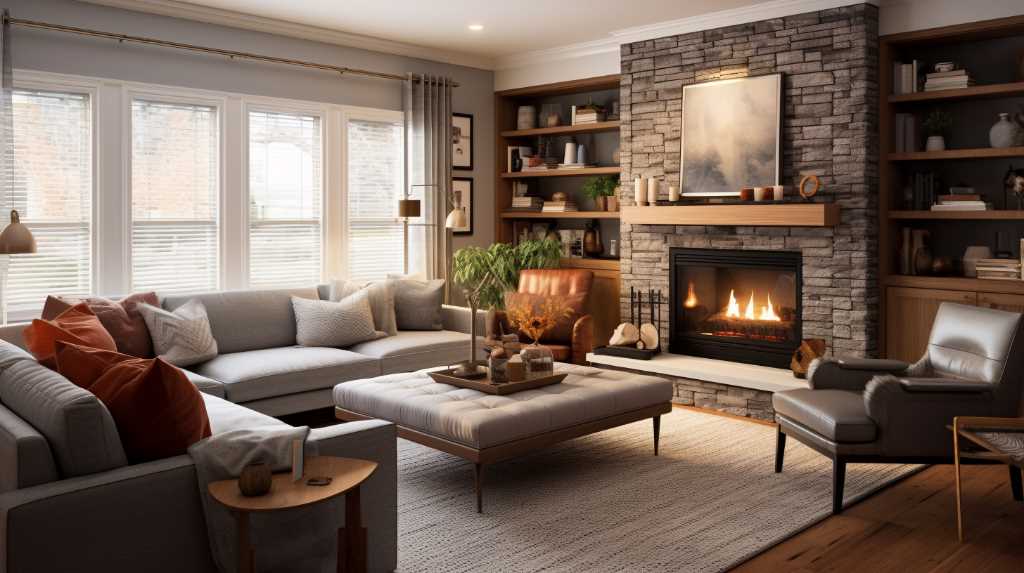In an era where environmental conservation is paramount, eco-friendly furniture designs stand at the forefront of sustainable home transformation. These designs, characterized by the use of renewable resources, minimal environmental impact, and innovative production processes, offer a pragmatic solution for those seeking to reduce their ecological footprint.
Through the careful selection of materials, such as sustainably sourced wood or recycled metals, furniture can embody both functionality and environmental stewardship. Additionally, energy-efficient manufacturing techniques and the prioritization of durability ensure that these pieces not only contribute to a greener household but also promote a circular economy.
By integrating upcycled elements, homeowners can further enhance the uniqueness and sustainability of their living spaces.
This discussion explores how the thoughtful adoption of eco-friendly furniture can be instrumental in shaping a more sustainable future within the home environment.
Understanding Eco-Friendly Materials
Selecting eco-friendly materials is a foundational step in transforming your home into a more sustainable environment. Embracing materials such as natural fibers not only minimizes ecological impact but also enhances the aesthetic and tactile quality of your furnishings. Fabrics like organic cotton, wool, hemp, and linen, sourced from responsibly managed plantations or farms, offer a renewable and biodegradable option that significantly reduces the carbon footprint of your home decor.
In addition to the choice of materials, green certifications play a pivotal role in the assurance of sustainability and ethical production practices. Labels such as the Forest Stewardship Council (FSC) for wood, the Global Organic Textile Standard (GOTS) for textiles, and the Leadership in Energy and Environmental Design (LEED) for overall design and construction, serve as benchmarks for environmental responsibility. These certifications often indicate that the products have met stringent standards regarding energy use, material sourcing, and the overall ecological impact.
In a market that is increasingly conscious of environmental concerns, informed and discerning homeowners can make a substantial difference by opting for furnishings that carry these certifications. Such proactive choices support the broader movement towards ecological stewardship and contribute to a healthier, more sustainable living space.
Energy Efficiency in Furniture Design
Incorporating energy-efficient features into furniture design is a critical aspect of enhancing a home’s sustainability. Thoughtful furniture placement can significantly contribute to the thermal comfort of a space, thereby reducing the reliance on heating and cooling systems. By strategically positioning furniture to take advantage of natural light and heat, homeowners can create an interior environment that maintains a comfortable temperature with minimal energy consumption.

For instance, placing a cozy reading nook near a window can utilize passive solar heating, a method that harnesses sunlight as a natural heat source. Conversely, during warmer months, larger furniture pieces can be positioned to block direct sunlight, helping to keep the room cool without overworking air conditioners. This approach not only optimizes energy use but also promotes a harmonious relationship between the furnishings and the home’s architecture.
Moreover, furniture that incorporates innovative materials with insulating properties can further enhance energy efficiency. Couches and chairs designed with thermally resistant fabrics or stuffing materials can act as barriers to heat transfer, maintaining thermal comfort and contributing to a more sustainable living environment.
Through these practices, energy-efficient furniture design becomes an essential component of an eco-friendly home.
Sustainable Production Processes
Advancing beyond the placement and material characteristics of furniture, sustainable production processes play a pivotal role in reducing the environmental footprint of home furnishings.
The integration of circular economy principles into furniture manufacturing emphasizes the regeneration of materials and the design of products with their end-of-life in mind. This approach ensures that the resources used are kept in use for as long as possible, thereby minimizing waste and encouraging the repurposing or recycling of materials once the furniture’s lifespan concludes.
Innovative production methodologies are also central to this sustainable paradigm. By employing precision in the use of materials and optimizing manufacturing techniques, producers can significantly curtail waste generation. The use of renewable energy sources and the reduction of carbon emissions throughout the production cycle further bolster the eco-credentials of furniture items.
Moreover, waste reduction is not merely about material usage; it encompasses water conservation, efficient logistics, and packaging solutions. Employing biodegradable or returnable packaging, for instance, can have a substantial impact on the overall sustainability of the furniture industry.
As consumers become more environmentally conscious, the demand for furniture that aligns with these eco-friendly production practices will likely continue to rise.

Longevity and Lifecycle Impact
How does the longevity of eco-friendly furniture influence its lifecycle impact on the environment?
When we consider the durability focus of eco-friendly furniture, we’re looking at how well the furniture withstands wear and tear over time. A piece that remains functional and aesthetically pleasing for decades has a significantly lower environmental impact compared to one that needs frequent replacement.
Lifecycle analysis of eco-friendly furniture takes into account the entire journey of a product—from resource extraction to production, use, and eventual disposal.
By emphasizing longevity, eco-friendly furniture designers are not only reducing waste but also conserving the resources required for manufacturing new products. This approach is innately sustainable as it minimizes the need for raw materials and the energy consumed in production processes, thereby reducing the overall carbon footprint of the furniture.
Moreover, furniture with a longer life span offers consumers a practical and cost-effective solution. It eradicates the cyclical pattern of buy-use-dispose that is prevalent in today’s consumer culture. Instead, it encourages a mindset of value and stewardship, which is essential for the transition towards a more sustainable society.
In essence, by investing in long-lasting eco-friendly furniture, we are taking a significant step towards reducing our environmental impact and fostering a circular economy.
Incorporating Upcycled Elements
The integration of upcycled materials into furniture design marks a pivotal step in enhancing home sustainability by repurposing waste into functional and aesthetic pieces. This approach, rooted in creative reuse, transforms discarded items into treasured components of our living spaces. Upcycling, a subset of recycling, involves elevating the value of an item rather than merely breaking it down for raw materials.
Artistic repurposing not only gives a second life to materials but also infuses homes with unique, story-rich furnishings.

Implementing upcycled elements in furniture can take various forms, from using reclaimed wood for sturdy table construction to repurposing old metal pipes into sleek, industrial-style shelving. The innovative transformation of glass bottles into elegant lamp bases or the weaving of discarded textiles into vibrant upholstery exemplifies practical creativity. These eco-conscious choices reduce landfill waste while crafting a narrative of sustainability within the home.
Moreover, upcycled furniture often becomes a conversation starter, serving as a testament to the homeowner’s commitment to environmental stewardship. As the demand for sustainable living solutions grows, embracing upcycled furniture designs becomes not just a trend, but a pragmatic step towards building a greener future.
